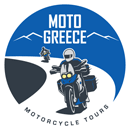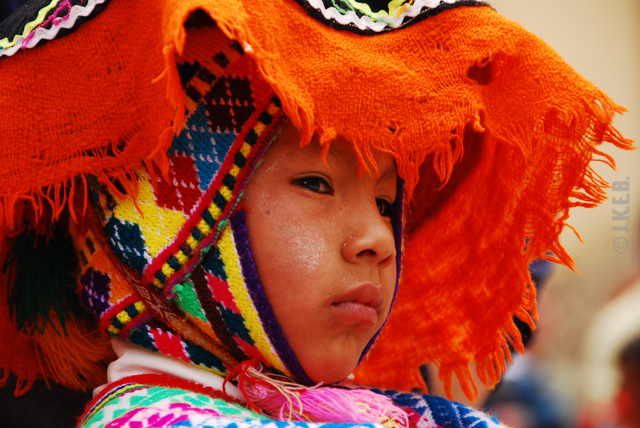Continued from part 1:
We had a lot of expectations from Peru but we were also nervous. The reason was that we wanted to ride as much as possible on mountain roads but it was rainy season already, during which the mountainous routes of Peru often become muddy and traversing them is a challenge. So, it was time to leave Bolivia. At Copacabana we boarded one of the wooden barges that cross the lake Titicaca and soon we were on Peruvian soil. We left the bike and our luggage at a hotel in Puno and we took a boat ride to the islands of the lake. First stop, the floating islands of the Uro people. Then we arrived at Amantani island where we spent a night at a home-stay with an indigenous family of Quechua descent. It was a memorable experience.
Image slider: Aboard the wooden barges that cross Lake Titicaca – the floating islands – at the Amantani island[imgslider-wrapper]
[imgslider imgurl=”1797″][imgslider imgurl=”1798″][imgslider imgurl=”1799″]
[/imgslider-wrapper]
We left Puno a couple of days later, heading to Cusco. This is the Peruvian side of the Andean high plateaus. A vast flat land stretched all around us. In Juliaca we got a good dose of traffic jams, noise and exhaust, since there is no ring road to bypass the city, which is also true for almost every city throughout Peru and throughout Bolivia. Gradually the landscape changed as we approached more and more wild parts of the Peruvian Andes. Snow-covered mountain peaks, green valleys and rivers surrounded us until Cusco. The ride was fantastic. Cusco boasts a beautiful and historically interesting old center. Museums of the Incas civilization, colonial buildings, monasteries, fortification walls and traditional houses compose nice images in many parts of the old city.
Image slider: Cusco[imgslider-wrapper]
[imgslider imgurl=”1800″][imgslider imgurl=”1801″][imgslider imgurl=”1802″]
[/imgslider-wrapper]
The city is used by most people as a starting point for the visit to Machu Picchu, ans so did we. But instead of jumping to the train that takes the crowds to the small village of Agua Calientes, since there is no direct paved route to take you there, we rode our motorcycle past Ollantaytambo and then from Santa Maria followed a circular route on dirt tracks to Santa Teresa. The whole route is simply spectacular. After Cusco the road ascends to the mountain pass Abra Malaga at 4,316 meters, where it is cold and misty. Then a curvy descend to more than 2,000 meters lower! Asphalt gave way to dirt, and as time passed and we pushed deeper into remote areas of the province of Cusco, the human presence diminished, the road was empty. The last 24 kilometers of dirt that followed until Santa Teresa were fantastic. In some parts the route was challenging, with large potholes full of fluffy soil, rolling stones and washboards. We were moving along the Urubamba River, which flows into a wild gorge, with the width of the road is just enough for one car, reminding us a little of the death road in Bolivia.
Image slider: the route from Cusco to Santa Maria (paved) and then to Santa Teresa (dirt)[imgslider-wrapper]
[imgslider imgurl=”1803″][imgslider imgurl=”1807″][imgslider imgurl=”1805″][imgslider imgurl=”1804″][imgslider imgurl=”1806″]
[/imgslider-wrapper]
Machu Picchu is of course a sight not to be missed if someone travels to Peru, even though it seemed a little overpriced. After our visit there, we returned to Cusco and we enjoyed some cold beers at the Norton Rats pub! We departed from the cultural capital of Peru on October 28th, very early in the morning, stressed because of the bad weather. Initially we set the goal of reaching to Abancay, 200 kilometers northwest. The route was once again magnificent, but at a very slow pace. The countless hairpins, the ascents and descents which succeeded each other as if we were on a roller-coaster, the views from the high points to the green Peruvian Andes that filled the horizon from end to end, the low path at the side of the river Apurimac with its waters running wildly inflated, all those put together formed a unique motorcycling day.
Image slider: at Machu Picchu – the views en route to Abancay – the openair market of Abancay[imgslider-wrapper]
[imgslider imgurl=”1811″][imgslider imgurl=”1808″][imgslider imgurl=”1810″]
[/imgslider-wrapper]
While in Abancay the weather turned worst with torrential rain. We intended to follow the route to Andahuaylas and then to Ayacucho, 400 kilometers of dirt and gravel. We gathered information according to which at that time, because of the rain pointed to a minimum 3 day journey. The police had said do not take that route. From another source we were told that with a 4×4 vehicle it could be done in 12 to 13 hours if it had been dry. All this meant for us that it would probably be a real nightmare, based on what we had seen that day in the valley of the Apurimac, with numerous landslides and heaps of mud all over the roads that caused quite a few closures. It was obvious that we had to change our plans. We left the gravel mountain trails of Peru and headed to the coast.
The way to Nazca showed us a wild beauty. At 4500 meters, the wind was freezing cold and the endless barren plateau, covered by a heavy dark sky, had a threatening aspect that inspired respect and awe. Now and then some of scattered settlements. The rain that fell intermittently made us rush. We did not want to be caught by that thick black veil that was moving ominously on the horizon. We had a very large distance to cover to the Nazca and our time seemed to end. In that corner of the Peruvian altiplano man feels isolated, exposed, vulnerable and very small.
Image slider: leaving Abancay – the altiplano region of Peru – Approaching Nazca from the east cordilleras[imgslider-wrapper]
[imgslider imgurl=”1812″][imgslider imgurl=”1813″][imgslider imgurl=”1814″]
[/imgslider-wrapper]
We visited Nazca and the famous geoglyph lines on the ground. Then it was time to cover some distance on the Peruvian part of the Panamerican highway. An endless road, cutting through the desert. The peaks of the Andes on our right and the coast of the Pacific Ocean on our left kept coming in and out of our sight as the road sometimes wrapped amid extensive dunes and sometimes sunk into large ridges. Initially this whole scene impresses but after some riding for hours in the monotonous straight it becomes boring. A few more days of riding north, past the capital of Lima and it was time to try one more time to head to the mountainous regions of the country, hoping for some good weather. Our next destination was the Cordillera Blanca, the white mountain range of the Peruvian Andes.
Image slider: crossing the endless Panamerican Highway – at Nazca – Approaching the Cordillera Blanca[imgslider-wrapper]
[imgslider imgurl=”1815″][imgslider imgurl=”1816″][imgslider imgurl=”1817″]
[/imgslider-wrapper]
We started our ascent. First emerged in our line of sight the Cordillera Negra. At Lake Coconcha at 4,000 meters we turned left and followed the road to the foothills of Cordillera Blanca which now appeared in the distance. We arrived in Huaraz just in time, early in the afternoon just before the heavy rain. The pattern of the rainy season remained consistent, unfortunately for us. We attempted to cross the Huascaran national park and do a dirt loop ride. But not long after we rode withing the boundaries of the area, all hell broke lose. Heavy rain combined with hail and fierce winds forced us to retreat, accepting defeat. With such conditions it would be madness to try to ascend a remote dirt track up to the rugged mountain pass at 4,800 meters.
Changing our route we headed from Yungai northwest to Hualanca, on asphalt roads but just for a while. Asphalt gave way to dirt again and we were now riding in the Canon del Pato, an area feared by some as there have been reports for bandits. But at that time we did not know that! So we crossed it. An amazing, must-do ride, for Peru. The canyon is dramatic. There are 35 tunnels sculpted in the bare rocky face of the cliff. Dark, claustrophobic. The gravel road is narrow, at some spots there is a sheer cliff disappearing below and no two cars can pass at the same time. This road could easily claim a title of a death road.
Image slider: at the Huascaran national park – Canon del Pato, can you see the road and the tunnels?[imgslider-wrapper]
[imgslider imgurl=”1818″][imgslider imgurl=”1819″][imgslider imgurl=”1820″]
[/imgslider-wrapper]
Up next was the mountainous region of Cajamarca and the Amazonas region of Peru. The whole mountainous route from Cajamarca to Celendin and then to Chachapoyas is amazing. Especially the part from Celendin to Chachapoyas. To call it magic would be an understatement! Nor our description or our pictures can do justice to this fantastic place. Even though we were riding constantly under rain and mist, which often blocked our view to the valleys and the gorges, and depsite the fact that the route is for the most part dirt (which becomes mud, a lot of it), those days are included in our highlights of the journey.
Image slider: the amazing, despite full of mud, route to Celendin and Chachapoyas[imgslider-wrapper]
[imgslider imgurl=”1821″][imgslider imgurl=”1822″][imgslider imgurl=”1823″][imgslider imgurl=”1824″][imgslider imgurl=”1825″][imgslider imgurl=”1826″][imgslider imgurl=”1827″]
[/imgslider-wrapper]
We left that part of the Andes and headed again to the plains, to the city of Piura. Before that, we crossed rice fields and then an arid, warm, savana-like landscape that reminded us of Africa. Now, after 22 days of crossing Peru south to north, Ecuador was awaiting !
Images courtesy of John Kapelakis & Elena Bitsika

